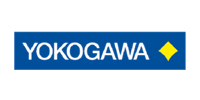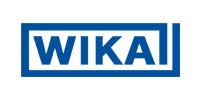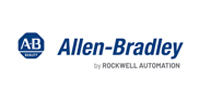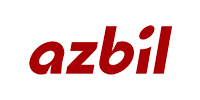CCTV & Security
CCTV (Closed-Circuit Television) and security systems play a vital role in safeguarding industries by providing continuous surveillance, protecting assets, ensuring worker safety, and monitoring operational activities. In industrial environments, these systems are designed to meet the unique needs of large, complex sites such as manufacturing plants, warehouses, refineries, and power plants, where security and safety are critical concerns.
Here’s an overview of how CCTV and security systems are used in industrial settings:
1. Surveillance and Monitoring
CCTV Cameras
- Function: Provide continuous video surveillance of key areas, including production lines, storage areas, perimeter boundaries, and access points.
- Applications: Used to monitor employee activities, detect intrusions, prevent theft, and ensure compliance with safety protocols.
- Types of CCTV Cameras:
- Fixed Cameras: Monitor specific areas, such as entrances, exits, or sensitive locations like warehouses.
- Pan-Tilt-Zoom (PTZ) Cameras: Allow for remote control, enabling operators to zoom in on areas and rotate the camera for broader coverage.
- Thermal Cameras: Ideal for monitoring in low-visibility conditions, such as night time or through smoke, fog, or dust.
- Infrared Cameras (IR): Provide clear imaging in complete darkness, used for night surveillance.
- Wireless Cameras: Flexible and easy to install in areas where cabling is impractical.
Applications:
- Production Monitoring: CCTV systems can track production lines to ensure operational efficiency and identify process issues or equipment failures in real-time.
- Inventory Control: Surveillance of storage areas and warehouses helps in preventing inventory theft, damage, or mismanagement.
- Worker Safety: Monitor worker behavior, ensure compliance with safety procedures, and quickly respond to workplace accidents or hazardous situations.
2. Perimeter Security and Intrusion Detection
Perimeter Intrusion Detection Systems (PIDS)
- Function: Detect unauthorized access to restricted areas or secure perimeters.
- Applications: Installed around the perimeter of an industrial site, such as fencing, gates, and boundary walls to detect any breach or unauthorized entry.
- Types of Perimeter Security Systems:
- Fence-Mounted Sensors: Detect vibrations or movements when someone tries to climb or cut through a fence.
- Ground Sensors: Monitor seismic activity and detect footsteps or vehicle movements approaching the perimeter.
- Laser or Infrared Beams: Create invisible detection zones across restricted areas that trigger alarms when crossed.
Security Gates and Access Control Systems
- Function: Control and restrict access to industrial premises, ensuring that only authorized personnel enter sensitive areas.
- Applications: Used at main entrances, employee gates, and high-security areas within industrial complexes.
- Types:
- Turnstiles: Restrict pedestrian access, ensuring one person enters at a time.
- Bollards and Barriers: Control vehicle access to loading docks and parking lots.
- Biometric Access Control: Uses fingerprints, retina scans, or facial recognition to grant entry to authorized personnel.
- RFID Badge Scanners: Ensure employees and contractors can only access areas they are authorized to enter.
3. Fire and Environmental Monitoring
Fire Detection Systems
- Function: Detect and respond to potential fire hazards, including smoke, heat, or gas leaks.
- Applications: Fire alarms and suppression systems are vital in industries with high fire risks, such as oil refineries, chemical plants, and manufacturing units handling flammable materials.
- Types of Fire Detection:
- Smoke Detectors: Alert the system when smoke is detected, often used in enclosed areas like offices, control rooms, or warehouses.
- Heat Sensors: Trigger alarms when temperature thresholds are exceeded, commonly used in industrial kitchens or areas with heavy machinery.
- Flame Detectors: Detect fires by sensing the infrared or ultraviolet light emitted by flames, essential in open industrial spaces or hazardous areas.
- Gas Detectors: Monitor air quality to detect hazardous gases like methane or carbon monoxide in industrial plants and power facilities.
Environmental Monitoring Cameras
- Function: Specialized CCTV systems can detect environmental hazards, such as oil spills, gas leaks, or overheating equipment.
- Applications: Often combined with thermal imaging technology, these systems help identify dangerous conditions in real-time, enabling quick corrective actions.
- Examples:
- Gas Leak Detection Cameras: Specialized cameras that detect invisible gas leaks using infrared technology, essential in oil refineries and chemical plants.
- Thermal Cameras: Monitor machinery and electrical equipment for overheating, reducing the risk of fires or equipment damage.
Environmental Monitoring Cameras
- Function: Specialized CCTV systems can detect environmental hazards, such as oil spills, gas leaks, or overheating equipment.
- Applications: Often combined with thermal imaging technology, these systems help identify dangerous conditions in real-time, enabling quick corrective actions.
- Examples:
- Gas Leak Detection Cameras: Specialized cameras that detect invisible gas leaks using infrared technology, essential in oil refineries and chemical plants.
- Thermal Cameras: Monitor machinery and electrical equipment for overheating, reducing the risk of fires or equipment damage.
4. Access Control and Employee Management
Biometric and RFID Access Control Systems
- Function: Control access to industrial facilities and secure areas using biometric identification or RFID (Radio Frequency Identification) cards.
- Applications: Used to restrict unauthorized access to sensitive locations, such as control rooms, server rooms, or chemical storage areas. Also helps in tracking employee attendance and movements.
- Types of Systems:
- Fingerprint Scanners: Ensure that only authorized personnel can access restricted areas.
- Facial Recognition: Widely used for high-security industrial zones where quick identification of personnel is necessary.
- RFID Access Cards: Allow workers to enter restricted areas while logging entry times for workforce management.
Visitor Management Systems
- Function: Track visitors entering and leaving industrial premises.
- Applications: Used in large industrial complexes to manage contractors, delivery personnel, or visitors.
- Types:
- Digital Visitor Logs: Track and document visitor details, ensuring only authorized personnel are allowed on-site.
- Temporary Access Cards: Issued to visitors and contractors for controlled access to specific areas.
5. Alarm and Emergency Response Systems
Alarm Systems
- Function: Trigger alarms in case of security breaches, fire, or environmental hazards.
- Applications: Used in conjunction with CCTV and access control systems to provide real-time alerts to security personnel and emergency responders.
- Types:
- Intrusion Alarms: Trigger when unauthorized access is detected through doors, windows, or perimeters.
- Fire Alarms: Alert occupants and fire response teams in case of smoke or heat detection.
- Panic Buttons: Allow employees to trigger alarms manually during emergencies, such as accidents or security threats.
Centralized Monitoring Systems (CMS)
- Function: Integrate all security, surveillance, and alarm systems into a single control hub for real-time monitoring and response.
- Applications: In large industrial complexes, CMS enables security teams to monitor all parts of the facility and respond quickly to incidents.
- Features:
- Remote Monitoring: Allows security teams to view camera feeds and receive alerts from off-site locations.
- Automatic Alerting: Notifies relevant personnel (security, management, or emergency responders) automatically during incidents like intrusions or fire outbreaks.
6. Cybersecurity for Industrial Security Systems
Network Security for CCTV and Access Systems
- Function: Protect the digital infrastructure of CCTV, access control, and alarm systems from cyber threats.
- Applications: With the increasing integration of IP cameras and digital security systems, industries need to safeguard their networks from hacking or unauthorized access.
- Key Areas of Protection:
- Firewalls and Encryption: Protect communication between security devices and control centers.
- Secure Access Protocols: Prevent unauthorized control of surveillance systems and protect sensitive security data.
- Regular Updates: Ensure security systems are regularly updated to protect against vulnerabilities.
Conclusion
CCTV and security systems are critical components of industrial safety and efficiency. They serve multiple purposes, from monitoring daily operations and protecting valuable assets to ensuring worker safety and preventing unauthorized access. Advanced technologies like thermal imaging, biometric access control, and real-time monitoring enhance the security infrastructure, while cybersecurity measures ensure the protection of these systems from external threats. By integrating these technologies, industries can mitigate risks, respond quickly to incidents, and maintain a secure environment.





























